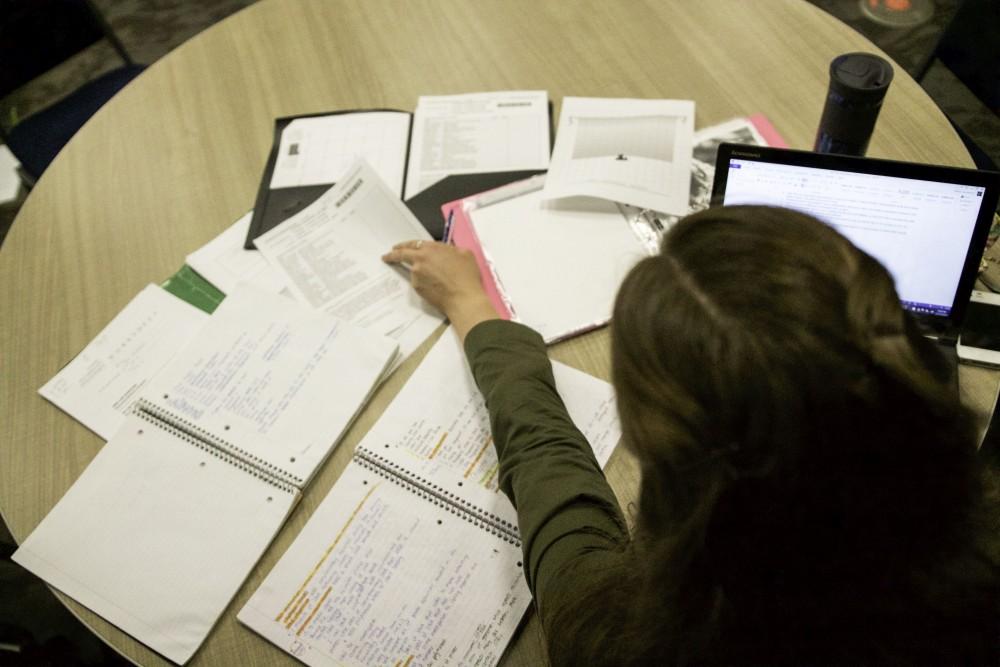The cost of multitasking

GVL / Sara Carte Grand Valley student, Alison Farnsworth, reaches for her homework while studying in the Mary Idema Pew Library on Allendale’s campus on Nov. 17.
Nov 19, 2015
As final exams are approaching, students are cramming to complete accumulated work over the semester. Some students are camping out around campus studying, while others are constantly checking their social media news feeds.
In most cases, multitasking while studying can allow students to engage in many activities at once. However, multitasking may come with a high price. The cost is the quality of work.
Results of a 2015 University of Connecticut study showed that multitasking while studying actually hurts students more than it helps them complete work.
The study measured the multitasking habits of more than 350 college students, finding that students who multitasked while doing homework had to study longer. In addition, students who frequently multitasked had lower grades on average than those who multitask less often.
Mariana Naddaf, academic coach graduate assistant at the Student Academic Success Center (SASC), said multitasking while studying negatively affects learning because students are not fully focused on the task at hand.
“When you are switching between studying, checking your phone and possibly talking with others, your mind is in three different spots all at once,” Naddaf said. “This lessens your concentration on the most important task.”
Often multitasking becomes procrastination, as students browse websites and become engaged in sending Snapchat messages or text messages to their friends.
Naddaf said the first way to avoid distractions is to become self-aware of those factors causing the distractions. She said when students are being distracted, they should remove themselves from the situation and refocus.
“Recognizing what typically distracts you is important,” she said. “Some students are distracted by studying in groups, so politely declining a study group can help you avoid that distraction.”
On the other hand, multitasking is not always a negative aspect. Naddaf said multitasking could be beneficial if the task is positively affecting the student’s work.
“I know some students enjoy listening to classical music without lyrics while studying,” she said. “They feel like it is a benefit to them and not really a distraction to their work.”
The SASC website has resources showing ways to develop concentration and focus while studying. The resources include: concentration strategies, a concentration checklist and memory improvement skills.
In addition, the SASC suggests students utilize the “power study hour” or intense study sessions, which include one hour of focused studying divided into four crucial steps to help with retention and concentration.
The sessions are outlined with a few minutes to set a goal, 30 to 50 minutes of studying, 10 to 15 minutes to take a break and five minutes to review material. Also, it emphasizes that eight hours of sleep is needed for optimum performance.
“Students love this strategy because you are not starting the studying expecting to sit and focus until you cannot take it anymore,” Naddaf said. “It is suggested that students do three to five power study hour sessions a day.”
For more learning and studying tips, visit www.gvsu.edu/sasc.






















